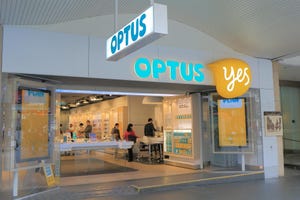Comcast Makes Hay With Metro Ethernet
About 15% of Comcast's business service revenues are now generated by mid-sized users served by the operator's MetroE platform

The decision by Comcast Corp. (Nasdaq: CMCSA, CMCSK) to move up-market to serve mid-sized businesses with more than 20 employees appears to be paying off, as the category now represents about 15 percent of the company's business services revenues.
About 15 percent of the total $621 million generated by business service customers (so, about $93.15 million) in the third quarter came from mid-sized businesses, company Vice Chairman and CFO Mike Angelakis said on Friday's earnings call.
Comcast uses its Docsis network to serve business customers with fewer than 20 employees, still the category of business user that generates the majority of Comcast's business customer sales.
The operator's Metro Ethernet strategy started to take some real shape in 2010, with Juniper Networks Inc. (NYSE: JNPR), Cisco Systems Inc. (Nasdaq: CSCO) and Ciena Corp. (NYSE: CIEN) as key suppliers. Comcast is also targeting businesses with up to 250 employees with a new hosted PBX service. (See Comcast Hones 2-Pronged Business Attack, Comcast Chases Big[ger] Business , Ciena, Cisco & Juniper Get Piece of Comcast's MetroE and Comcast Rolls Business Voice Into the Cloud.)
Comcast's business services revenues were up 34 percent year-over-year, giving it $1.74 billion through the first nine months of 2012, putting it on pace to easily exceed the $2 billion mark for the year. Comcast has long stated its belief that the SMB and the small enterprise markets are each $15 billion business opportunities.
X1 update
Comcast has launched its next-gen video service, X1, in four markets (Atlanta and Augusta, Ga.; Boston; and Chattanooga, Tenn.), with two "major markets" set to launch in the next couple of weeks, said Neil Smit, president and CEO.
The X1 service is generated by a hybrid QAM/IP platform that is targeted to high-end bundled customers and features the company's new cloud-based interface and access to a handful of new interactive applications.
Comcast isn't identifying where X1 is going next, but Denver and the company's Freedom Region -- a cluster of systems that serve greater Philadelphia, New Jersey and northern Delaware -- are among the markets that could be next in line. (See Where Will Comcast's X1 Land Next? and Comcast's Cloud TV Service Rolls Into Atlanta.)
Smit did not take the bait when an analyst asked if Comcast might be in a position to actually add, rather than lose, video customers in the fourth quarter, noting only that the company is "focusing on execution."
Comcast lost 117,000 video subscribers in the third quarter, fewer than the 165,000 it lost in the same quarter a year earlier. (See Comcast Spectrum Sale Boosts Q3 Profit.)
— Jeff Baumgartner, Site Editor, Light Reading Cable
About the Author(s)
You May Also Like












